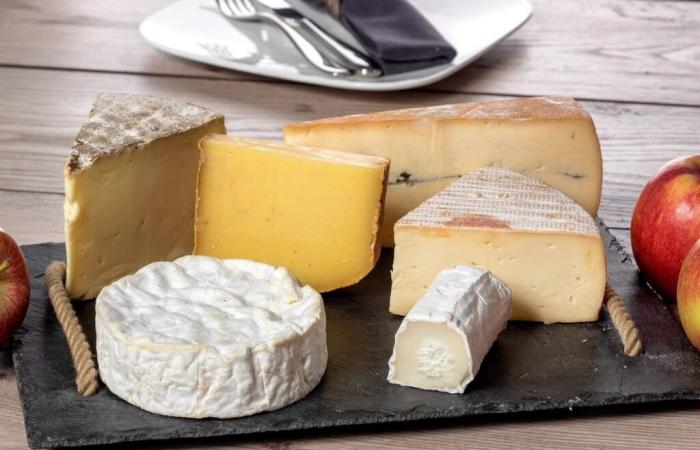The cheese industry has been facing new difficulties for several years. To the point that the manufacturing of certain French cheeses is seriously threatened.
Cheese is a true French taste and cultural heritage. Making and tasting this dish is almost an art for some! However, its production is far from appetizing since it relies on the cultivation of mold. In fact, cheeses harbor a multitude of carefully selected micro-organisms capable of transforming milk.
But these ferments are not spared by the standards of the food industry, to the point that blue cheeses or Camembert could disappear. This is in any case what a CNRS article published last February states. Because of this selection, there is a drastic reduction in the genetic diversity of the microorganisms involved in the manufacturing of these national treasures.
This is particularly the case for the strain of mold called Penicillium camemberti variety camembertian albino mutant isolated in 1897 in the Brie region, the only one used to inoculate Camembert and its flowering cousins like French Brie, English Baron Bigod and American Mt Tam. They all owe their characteristic white and fluffy rind to it. By sprinkling this mutated mold onto the sterilized surfaces of their cheese, cheesemakers replaced the colorful rind's variety of molds and bacteria, ranging from red to blue, green and gray, with pure white. It’s much more effective in terms of marketing!
But this homogeneity poses a problem. Today, all Penicillium camemberti var camemberti are cloned from this same mutant spore, which makes them incapable of sexual reproduction. However, it is precisely this sexual reproduction with other strains that provides new genetic material. Consequence: it is today very complicated for all manufacturers in the sector to obtain spores of Penicillium camemberti in sufficient quantity to inoculate their production of Norman cheese.
The situation is not catastrophic though! It would be enough to turn to similar molds, such as Camembert penicillium var or Penicillium biforme. Only, the cheese will not have its white rind so homogeneous. The question of the end of Camembert therefore does not really arise, we will simply have to learn to love the diversity of tastes, colors and textures again, sometimes within the same production.
But this is not the only difficulty encountered by cheesemakers. The real problem comes from climate change, which also threatens cheese production and, above all, the very specific manufacturing recipes that have been passed down for generations. Indeed, the heavy rainfall in Normandy has led to the proliferation of new, undesirable molds on the Camemberts and has so waterlogged the soil that the cows can no longer go to pasture.
In other places, droughts affect milk yields and the flavor of the finished product. Thus, this summer, the production of Auvergne Salers and Aveyron Grand Aubrac was temporarily suspended in favor of Laguiole and Cantal, which are normally produced in winter. And that's without counting European legislation, which threatens traditional cheese-making methods. The Saint-Nectaire is particularly threatened at this level! Cheesemakers and consumers will have no choice but to adapt…






